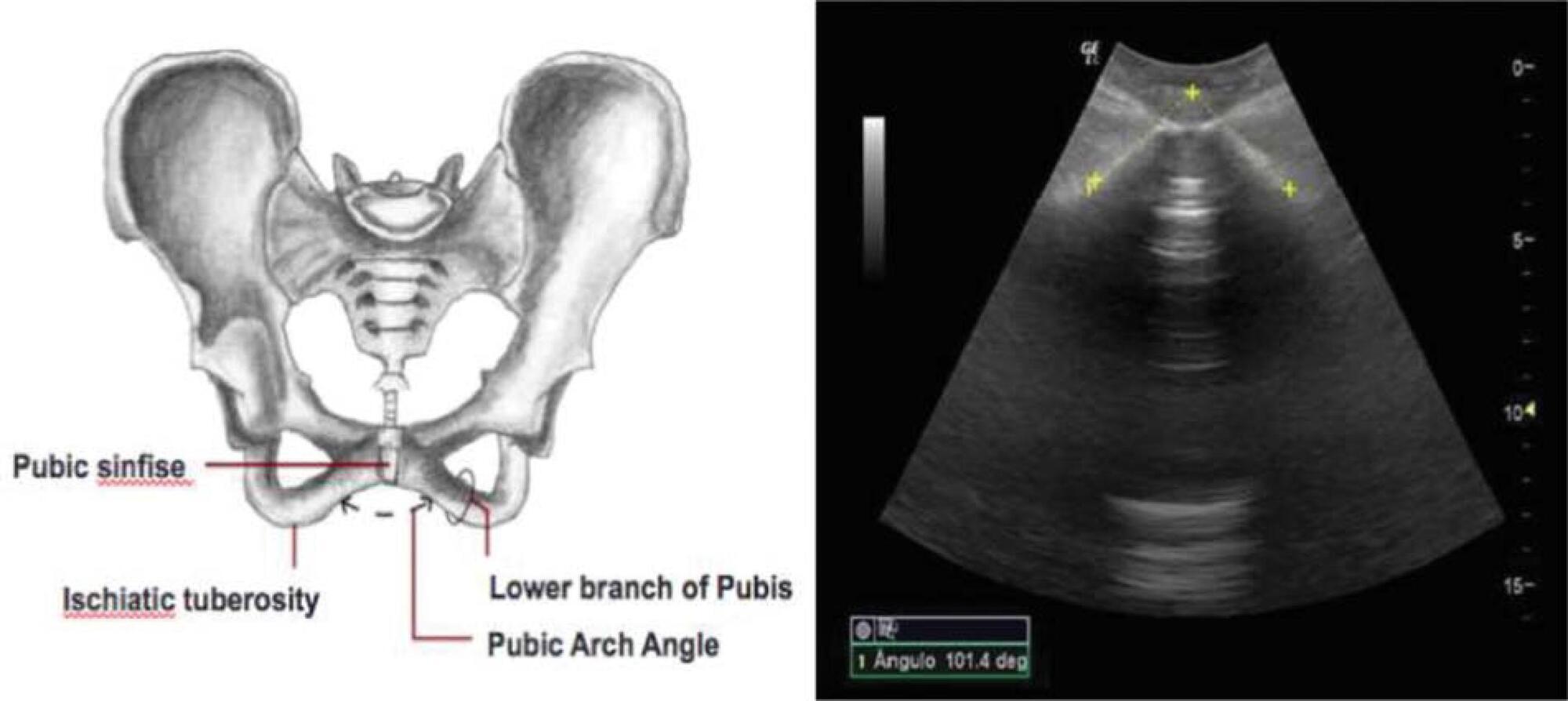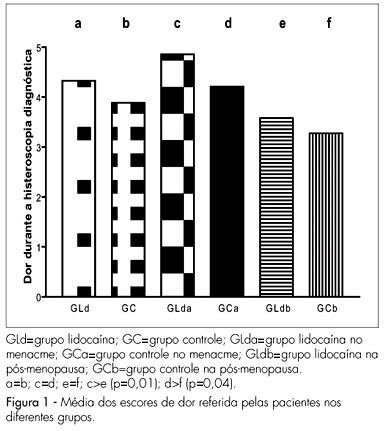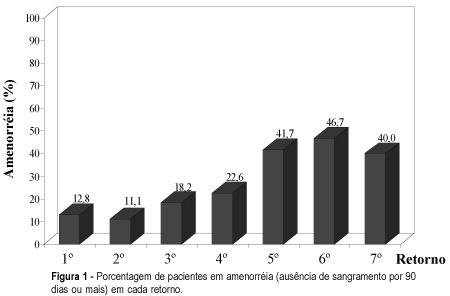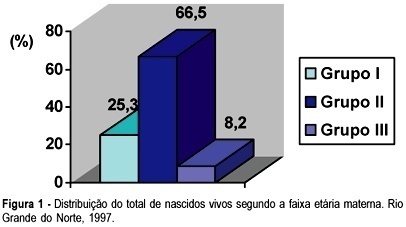Summary
Revista Brasileira de Ginecologia e Obstetrícia. 2020;42(4):181-187
To evaluate the ability of the pubic arch angle (PAA) as measured by transperineal ultrasonography during labor to predict the delivery type and cephalic pole disengagement mode.
The present prospective cross-sectional study included 221 women in singleton-gestational labor ≥ 37 weeks with cephalic fetuses who underwent PAA measurement using transperineal ultrasonography. These measurements were correlated with the delivery type, cephalic pole disengagement mode, and fetal and maternal characteristics.
Out of the subjects, 153 (69.2%) had spontaneous vaginal delivery, 7 (3.2%) gave birth by forceps, and 61 (27.6%) delivered by cesarean section. For the analysis, deliveries were divided into two groups: vaginal and surgical (forceps and cesarean). The mean PAA was 102 ± 7.5º (range, 79.3-117.7º). No statistically significant difference was observed in delivery type (102.6 ± 7.2º versus 100.8 ± 7.9º, p = 0.105). The occipitoanterior position was seen in 94.1% of the fetuses and the occipitoposterior position in 5.8%. A narrower PAA was found in the group of surgical deliveries (97.9 ± 9.6º versus 102.6 ± 7.3º, p = 0.049). Multivariate regression analysis showed that PAA was a predictive variable for the occurrence of head disengagement in occipital varieties after birth (odds ratio, 0.9; 95% confidence interval, 0.82-0.99; p = 0.026).
Ultrasonographic measurement of the PAA was not a predictor of delivery type, but was associated with the persistence of occipital varieties after birth.

Summary
Revista Brasileira de Ginecologia e Obstetrícia. 2007;29(4):181-185
DOI 10.1590/S0100-72032007000400003
PURPOSE: to determine the efficacy of 10% lidocaine spray applied to the cervix before the procedure of diagnostic hysteroscopy, in order to reduce the painful process and the discomfort caused by the exam. METHODS: a total of 261 consecutive patients participated in the study, which was conducted from March 2004 to March 2005. The patients were randomly assigned to one of two groups: one group receiving topical lidocaine spray (lidocaine group - LdG) and the other, receiving no medication before the procedure (control group - CG). In the LdG patients, thirty milligrams of 10% lidocaine spray were applied to the surface of the cervix five minutes before hysteroscopy started. Immediately, after the end of the procedure, the patients from both groups were asked to respond to a questionnaire about pain and to quantify the pain, in centimeters, using a 10-cm non-graduated visual analog scale. The unpaired t test, the Mann-Whitney test and the chi2 test were used for statistical analyses, considering p significant if lower than 0.05. RESULTS: there was no statistically significant difference between groups regarding age, parity or percentage of patients in menacme or menopause, or regarding the indications for the procedure and the hysteroscopic findings. A biopsy was necessary in 57 of the 132 LdG patients and in 48 of the 129 CG patients (p=0.96). The mean pain score was 4.3±2.9 in LdG and 3.9±2.5 in CG (p=0.2). A difference in the mean pain score was observed only among patients in menacme and menopause receiving or not the lidocaine spray, with p=0.01 and p=0.04 respectively. CONCLUSIONS: the use of lidocaine spray during diagnostic hysteroscopy does not minimize the discomfort and pain of the patients and therefore should not be applied.

Summary
Revista Brasileira de Ginecologia e Obstetrícia. 2001;23(3):181-186
DOI 10.1590/S0100-72032001000300008
Purpose: to evaluate the incidence of side effects and acceptance (continuity rate) of depot medroxyprogesterone acetate (DMPA) as an injectable three-monthly contraceptive given to adolescents in our milien. Method: forty adolescents (70% lactating) started to use DMPA and were followed-up for a mean of 14.2 months. Spontaneous complaints, menstrual changes, physical examination and laboratory data were collected and studied using Wilcoxon or McNemar tests. Results: the most frequent complaints were abdominal pain (16.6%) and headache (15.2%). Predominant menstrual patterns were spotting and oligomenorrhea. Significant variation of the systolic blood pressure was not observed during the follow-up. There was a slight fall in the levels of diastolic blood pressure, at the limit of significance. Significant deviations from baseline regarding fasting glucose were not noted, but the mean hemoglobin concentration tended to increase. Weight gain (mean 3.9 kg at 12 months) and menstrual irregularity (occurred in more than 70% of all visits) were the main reasons for discontinuation of the method. Twenty-seven patients were accompanied during 12 months and the continuity rate at that time was 81.5%. Conclusion: depot medroxyprogesterone acetate is a satisfactory contraceptive method for adolescents.

Summary
Revista Brasileira de Ginecologia e Obstetrícia. 1998;20(4):181-185
DOI 10.1590/S0100-72031998000400002
With the purpose of identifying the social, demographic, pregnancy-related and medical care factors associated with maternal death, this study evaluated all deaths of women aged 10 to 49 years occurring in Recife, Pernambuco, Brazil, during 1992 and 1993. The data were obtained reviewing 1,013 death certificates, with 42 cases of identified maternal deaths. The data of these deaths were complemented with information from medical records, autopsies and also interviews with physicians from the hospitals where the death took place, and with the dead women's relatives. Almost two thirds (62%) of maternal deaths occurred among women aged 20 to 29 years and more than half of them were single. There was a higher number of deaths among caesarean deliveries than among vaginal ones. The majority of deaths occurred within the first three days of hospitalization and approximately 90% of hospital charges were sponsored by the National Health System (SUS).
Summary
Revista Brasileira de Ginecologia e Obstetrícia. 2005;27(4):181-188
DOI 10.1590/S0100-72032005000400004
PURPOSE: to estimate the prevalence of Family Health Program postpartum depression (PPD) and its association with minor mental disorders (MMD) among women attended in two (FHP) PSF units, in the city of São Paulo, and to identify risk factors associated with PPD. METHODS:a cross-sectional study with 70 postpartum women from two FHP units (Fazenda da Juta II and Jardim Sinhá), from October 2003 to February 2004. The following instruments were used: questionnaire with socio-demographical-economic data and obstetric and perinatal data; Self-Report Questionnaire 20 (SRQ-20), for screening of MMD, and Edinburgh Post-Natal Depression Scale (EPDS), for evaluation of PPD. To verify association between explanatory variables and PPD, Student's t test, chi2 or linear trend chi2 were utilized when indicated. To evaluate concordance between scales (EPDS and SRQ-20) kappa (kappa) coefficient correlation was used. RESULTS:the prevalence of PPD and MMD was 37.1%. Scales presented a good concordance (kappa=0.75). The explanatory variables age, ethnicity, years of education, profession, and marital status, besides partner's profession and years of education, familiar income, number of pregnancies, parity, miscarriage, number of alive children, premature deliveries, gestational age, type of delivery, planning of actual pregnancy, score of Apgar (first and five minutes), newborn sex and weight, and breastfeeding did not show significant statistical association. A greater perception of social support from the partner was associated with lower prevalence of PPD (p=0.03). CONCLUSION: because of its high prevalence and negative impact upon mother and child, it is worthwhile to sensitize health care professionals about the importance of PPD
Summary
Revista Brasileira de Ginecologia e Obstetrícia. 2000;22(3):181-181
DOI 10.1590/S0100-72032000000300010
Summary
Revista Brasileira de Ginecologia e Obstetrícia. 2000;22(3):181-182
DOI 10.1590/S0100-72032000000300011
Summary
Revista Brasileira de Ginecologia e Obstetrícia. 2002;24(3):181-185
DOI 10.1590/S0100-72032002000300006
Purpose: to investigate the interactions between maternal age and adverse perinatal outcomes in the State of Rio Grande do Norte. Methods: we analyzed official records of 57,088 infants in the State of Rio Grande do Norte, from January 1997 to December 1997. Data were obtained from the Information System of the Health Ministry, Brazil. The sample was divided into three Groups I, II and III according to maternal age range: 10 to 19 years, 20 to 34, and 35 or more, respectively. The main outcome variables were: length of pregnancy, birth weight and mode of delivery. Statistical analysis was performed using chi² test. Results: preterm deliveries were 4.3% in the adolescent group vs 3.7% in Group II (p = 0.0028). The incidence of cesarean section was higher in Group II than in the other Groups (p<0.001). Low birth weight was significantly higher in Groups I (8.4%) and III (8.3%) when compared with Group II (6.5%) (p<0.0001). Conclusions: we found a higher incidence of lower birth weight and preterm delivery in the adolescent group. In women ³35 years old there was a high incidence of low birth weight and macrosomia. Results suggest that cesarean sections are more common in women aged 20-34 years than in adolescent and older mothers.
